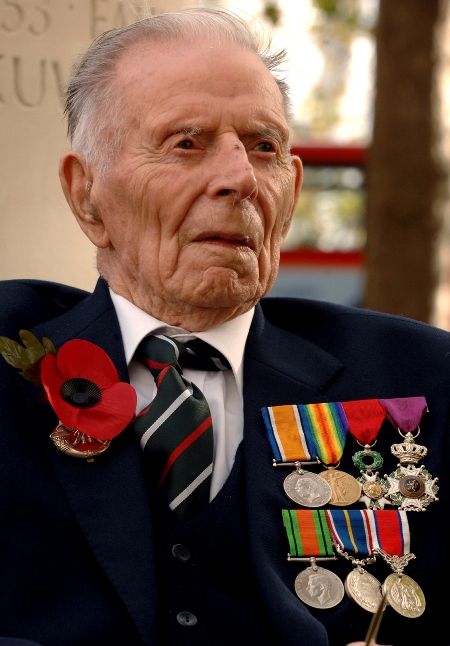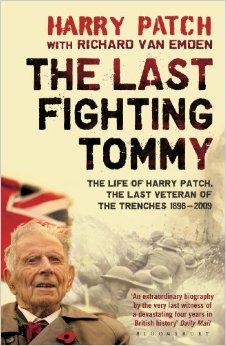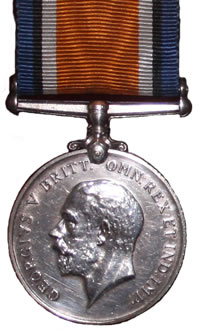
Sidney Wilfred Crew
name mis-spelt 'Crewe' on memorial

7th Battalion
Private 29679
 | Sidney Wilfred Crewname mis-spelt 'Crewe' on memorial |  |
| Duke of Cornwall's Light Infantry 7th Battalion Private 29679 | ||
| Died as POW, 29th September 1918 |
Sidney Crew's Parents | ||
|
Sidney Crew was
the son of James Crew and Isabella (née Green). Both parents lived in
Englishcombe in their childhood, so would have known each other growing up. James Crew James’ father was an agricultural labourer (as were James’
two eldest brothers in the 1861 census) and the family of eight lived very near
to Manor Farm in Englishcombe, so it is very likely that he worked there. In
1871, James was sixteen and worked as a gardener, whereas two of his younger
brothers were also working as farm labourers at the ages of twelve and ten. In
1881, James was to be found, aged 26, lodging in Stapleton Road, Bristol, and
working as a malthouse labourer. Isabella Green Sidney’s mother Isabella was born in the hamlet of Nailwell,
between Englishcombe and Priston. Her father was also an agricultural labourer.
They lived in Priston in 1861, but in Englishcombe in 1871. In 1881, at the age
of 22, she had moved into Bath and was a domestic servant with the Hornby
household at 10 Devonshire Buildings, off Wellsway. Caleb Hornby had founded
the business that became Colmer’s in Union Street; a department store that
continued as a fixture in the city’s shopping scene for well over a hundred
years. He died in the 1860s and Isabella was servant to his widow and son. | ||
The Crew Family |
James
and Isabella married at Englishcombe Church in 1883.  |
|
James & Isabella are listed by Bath
directories of
1884-1893 as living in ‘Englishcombe’, but the 1891 census shows them
living at
Fair View Cottages, Rush Hill. This was at a time when Rush Hill and
parts of Odd
Down were still considered outposts of Englishcombe, reached from Bath
via
Englishcombe Lane. Fair View Cottages were three pairs of semi-detached
cottages in the lane behind the former Rose & Laurel public house;
they are
still there, numbered 136-128 Rush Hill (No 1 Fair View Cottages became
No 136 Rush Hill). James was listed as ‘gardener not domestic’, usually
meaning
that he was employed tending some larger gardens belonging to a
municipal or
private property. Children Mabel, Minnie, Rose & Albert were
already on the scene. Sidney was born in 1898, shortly before the family moved
down the slopes into the ever-expanding southern suburbs of Bath. In 1900, the Bath directory lists the family at ‘3 Lymore
Lane’, which was later known as ‘Lymore Avenue West’ and then became part of
Lymore Avenue itself. We can assume that Lymore Lane was the portion of Lymore
Avenue in the vicinity of the Rising Sun public house, where there is a terrace
of cottages that predates most of the other buildings on Lymore Avenue. Father James had by now specialised in
spadework; his occupation; ‘gravedigger’. In 1901, the census again shows the family’s address as Fair
View Cottages, but the location this time seems to be in Lymore Avenue and
could have been an alternative name for the old row of cottages in Lymore Lane.
The census further confirms James as gravedigger in the employment of the
church. Living in the parish of Twerton, it is very likely that James was the
gravedigger for the parish; the graveyard at that time was the cemetery in
Bellotts Road, alongside the main London-Bristol railway line. (We know that
James’ brother Charles Crew was for many years superintendent of the Twerton
cemetery and is himself buried there). |
|
The 1911 census tells us that Sidney’s three sisters were
all working in tailoring. His brother Albert was also sewing, but
working for a
bookbinder. Sidney, at age 12, was finishing his schooling at South
Twerton but we know that he, too, went into the book production
business as he is listed on the memorial at Pitman Press. |
Sidney Crew in WW1 | ||
Duke of Cornwall's Light Infantry, 7th Bn.We need
to conduct more research on the details of Sidney Crew's service with
the DCLI 7th. If the unit sounds familiar, then it is because this was
the unit with which Harry Patch
served. His biography 'The Last Fighting Tommy' will be our first port
of call for information on movements of the 7th Bn; Harry Patch's
serial number 29295 was just 400 or so below that of Sidney Crew, so
they probably joined the unit within days of each other. Harry Patch and (below) his biography 'The Last Fighting Tommy'  It seems that the 6th and 7th (Service) Battalions were formed of volunteers quite soon after the outbreak of war, augmenting the two regular battalions, a Militia battalion and two battalions of territorials that existed prior to the war. The 7th Bn saw service on the Western Front from 1915. From http://hubpages.com/hub/Duke-of-Cornwalls-Light-Infantry-in-World-War-1: 7th Battalion DCLI The men of the 7th DCLI were largely volunteers and according to the Battalion diary many were "young and immature townsmen" yet goes on to note that they "behaved exceedingly well". These young men were put to the test during the Battles of the Somme in 1916. At the Battle of Guillemont they were shelled heavily on 23rd August and on the following two days. Nevertheless they kept the enemy at bay until they were relieved on the afternoon of the 25th. There was no rest; the men were set to work clearing trenches and then marched back to the front line on the 30th. There they had only one dug-out for the entire Battalion and they endured a miserable time knee deep in mud, surrounded by dead bodies and under attack with shells and gas. On 1st September the Battalion notes that the tour was "the most trying we have experienced". Sadly, the Somme was not the last battle the 7th Cornwalls took part in and there was more of the same mud and misery to come at Passchendaele, 3rd Ypres the following year. | ||
Sidney Crew's Death | ||
| Sidney Crew died in captivity as a prisoner of war in Poland. This record survives: It appears to give us the following information (although I am open to other suggestions on how to interpret!):
| ||
Decoration | ||
| Private Sidney Crew would have been in receipt - posthumously - of the British War Medal and the Allied Victory Medal. | ||
 |  | ||
| British War Medal 1914-18 | Allied Victory Medal |
Burial |
|
Poznan Old Garrison Cemetery Sidney Crew is buried at Poznan. From the Commonwealth War Graves Commission: After
the First World War, the graves of Commonwealth servicemen who had died
in Poland as prisoners of war were gathered together in this cemetery.
|
Commemoration | ||
 In addition to his (mis-spelled) commemoration on the South Twerton School memorial (above), Private Sidney Crew is commemorated as follows: | ||
|
Bath War Memorial See separate page for details of the Bath War Memorial. Sidney Crew's inscription: |
 |
|
Ascension Church Memorial Sidney Crew's name is inscribed on the oak tablet in the Ascension Church (see separate page for details of the Ascension Church Memorial): |
 |
|
Pitman Press Memorial The Pitman Press works on the Lower Bristol Road also created a memorial in 1924 that carried the names of workers from the company who gave their lives. It includes four South Twertonians - including Sidney Crew - plus the brother of George Strong. It lists Sidney Crew as having belonged to the Devon Regiment but we believe this to be one of a number of inaccuracies of detail on this memorial. See the additional page on the Pitman Press memorial. |
 |
|
7th DCLI Memorial The last surviving veteran of the Western Front in WW1 was Harry Patch, from Combe Down (edge of Bath) who died in 2009 aged 111. In his final years, Harry Patch supplied and dedicated a memorial in Langemarck to his comrades in 7th DCLI, of whom Sidney Crew was one. Photo: www.ww1cemeteries.com More details about Harry Patch and the DCLI 7th Battalion memorial can be found here. |
|
Duke of Cornwall's Light Infantry Memorial The regimental museum at Bodmin is home to a memorial to the fallen soldiers of the DCLI. Details of the museum and a photograph of the memorial can be seen here. |
|
The Light Infantry Memorial All those who died while serving with battalions of the Light Infantry are commemorated by a memorial at the National Memorial Arboretum near Lichfield in Staffordshire. Details of the memorial can be found here. |
Further Information |
Living relativesIt would be great to hear from any living relatives of Sidney Crew.
Please get in touch!If you have any further information on Sidney Crew, or want to suggest corrections / improvements for this page, please use the Contact page to get in touch. |